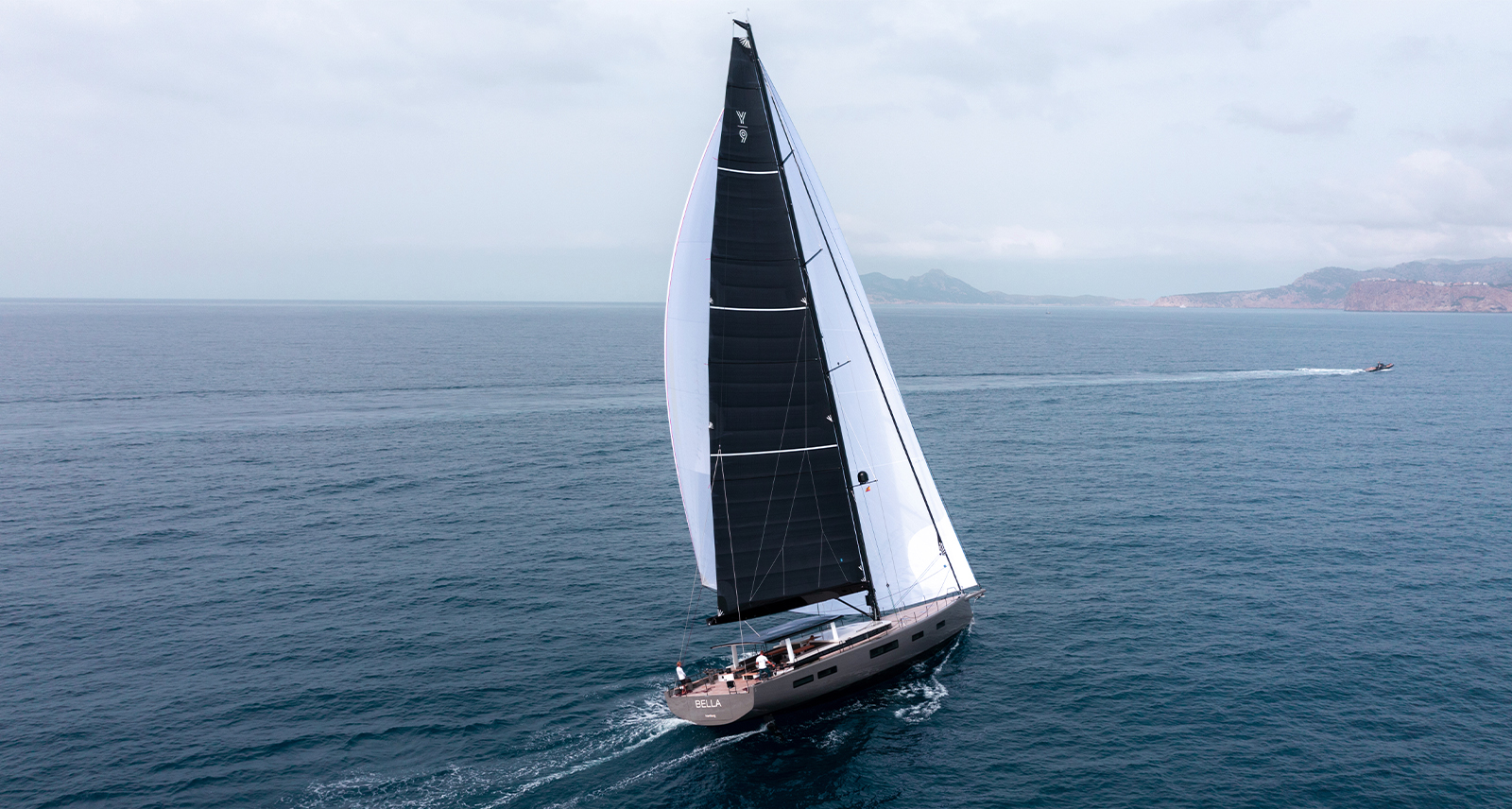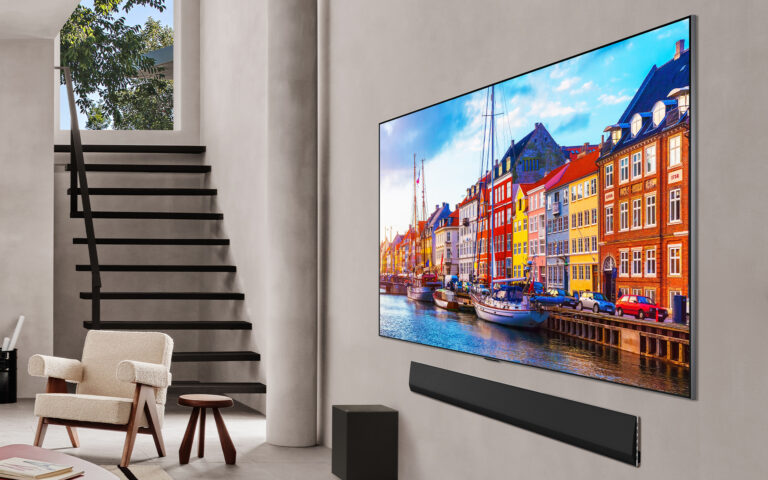The boat cuts through the water smoothly, sleek and slate grey, with its dark black sail towering overhead, mountainous and monumental, with its name, Y9, proudly emblazoned near the very top. She’s the stunning result of the newest collaboration between Copenhagen- based architecture and design studio Norm Architects and Michael Schmidt at YYachts, an award-winning company that makes fast-sailing, minimalistic yachts created from carbon.
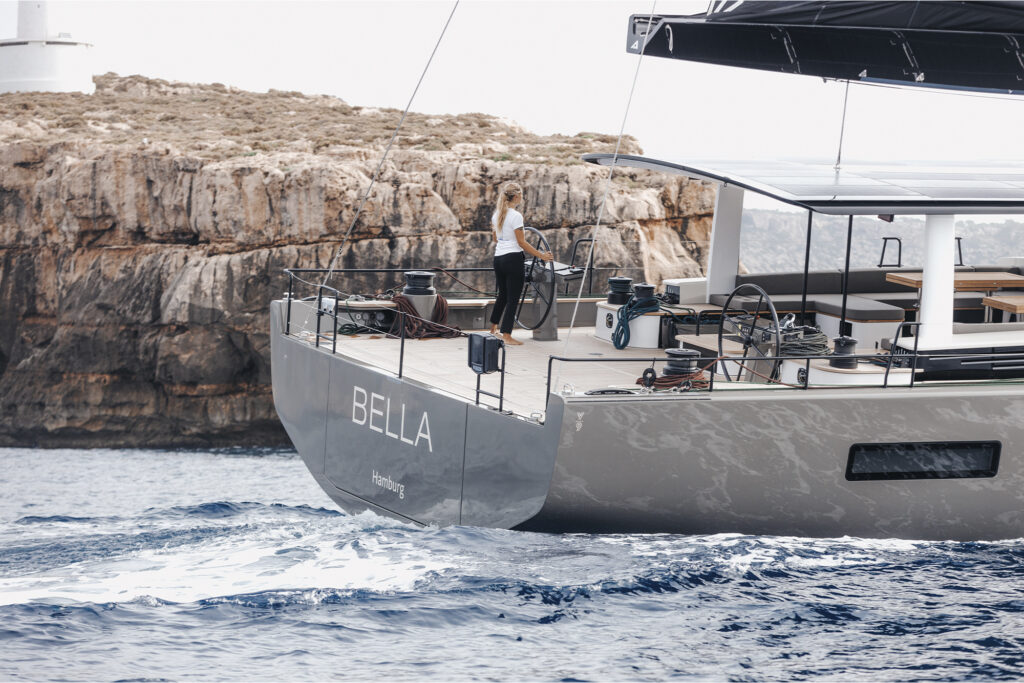
Norm Architects creates residential and commercial spaces across the world, from a high-class dental clinic in Belgium to a tea lounge in China and a beachfront property in Sri Lanka. All of it is tied together by their signature approach of “soft minimalism,” an unapologetically Scandinavian design ethos that prioritizes spaciousness and simplicity while maintaining warmth and tactility. The studio finds their natural pairing in this partnership with Schmidt, who “shares the same design ambitions of unique, understated luxury with a residential feel,” says Peter Eland, architect and partner at Norm. The slick, muted classiness of the Y9 is undeniable proof of the groups’ compatibility.
This is the second time Norm and YYachts have paired, the first being a 2019 collaboration on the Y7 yacht — a similarly sleek vessel with its interior also grounded in a modest, warm luxuriousness. With the Y9, Norm further refines the design characteristics and principles found in the Y7, bringing them to new heights. The studio faced two central challenges in translating soft minimalism into the hull of a yacht: remaining minimalistic despite such a limited space, and ensuring safety within a moving, water-bound vessel.
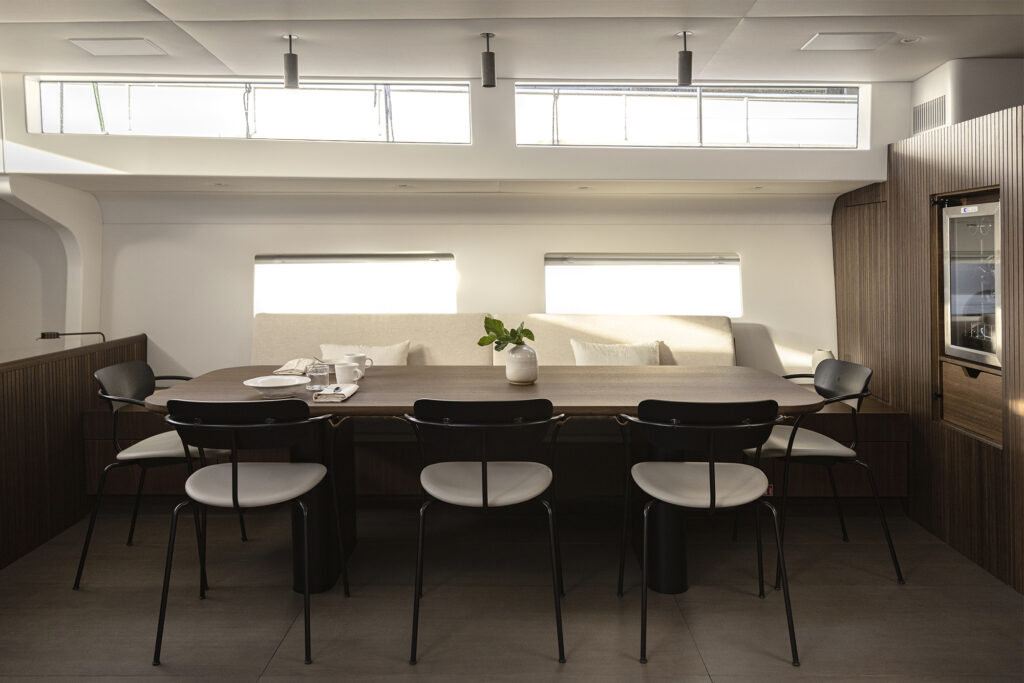
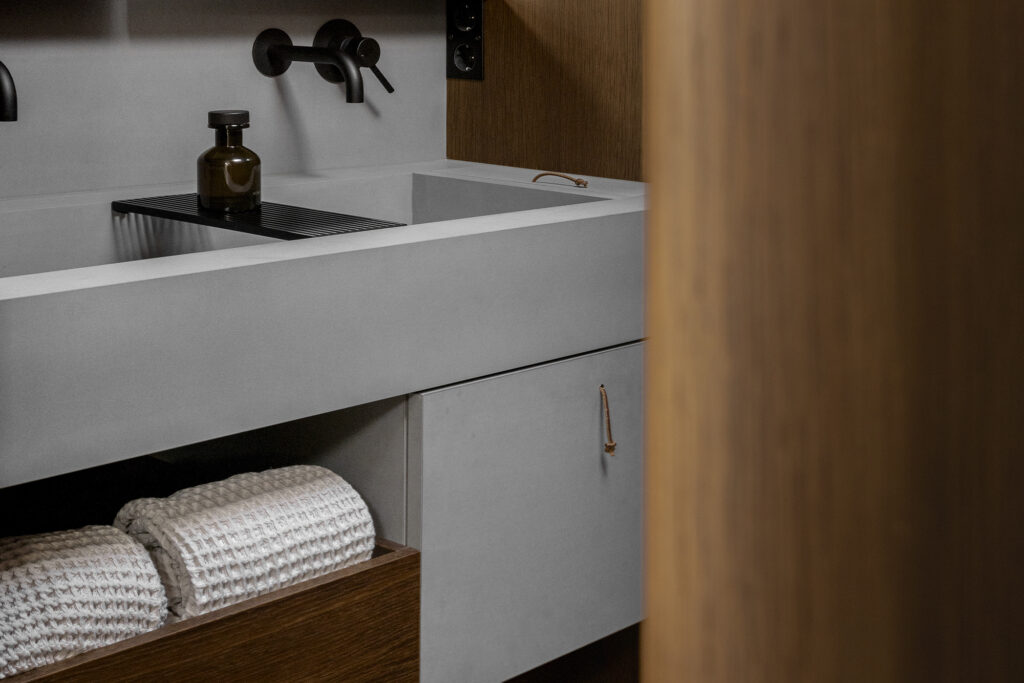
“Trying to fit everything was the most challenging part of the project. We had to rethink a lot of details due to the curved hull shape,” says Eland. The whole vessel is about 90 feet long, elliptical and narrow, with space taken up by framework elements. Norm’s first order of business was to emphasize simplicity by paring down the design to only what was essential, and to make more room for socializing, relaxing, and living.
Inessential aspects of the framework were removed to provide more fluid transitions between the spaces within the hull, and furniture and storage elements were, where possible, built-in so as to be unobtrusive — a small wine fridge, cabinets, and drawers are set smoothly into wood-panelled walls, and doors slide across rather than swing to take up less space.
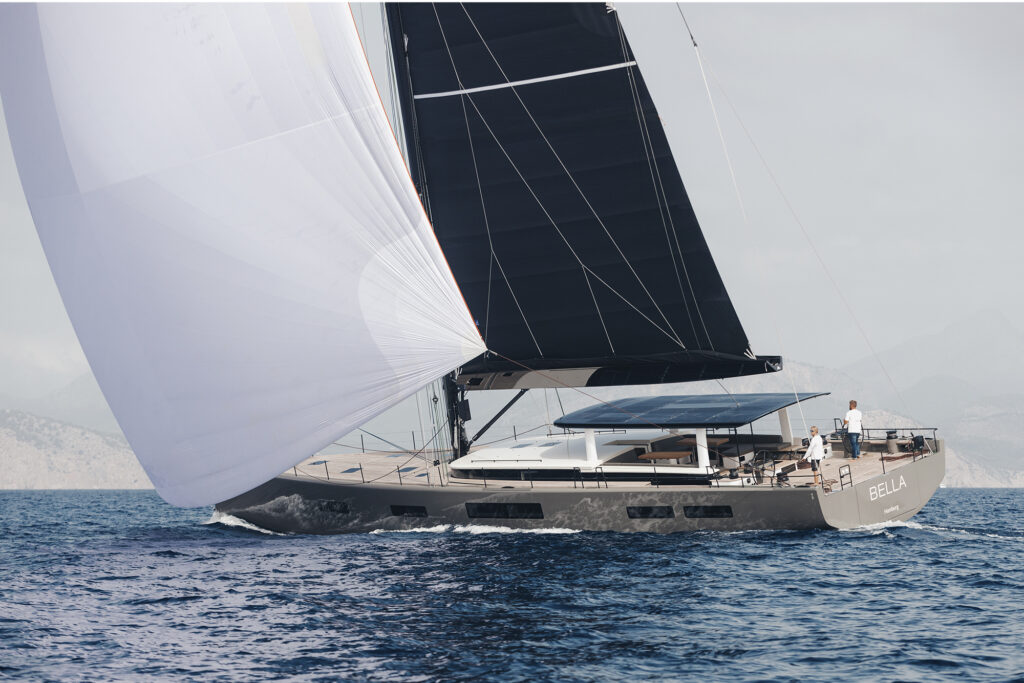
The architects worked with, rather than against, the curved form of the ship to design a natural-feeling, relaxed space; everything, from the corners of the dining table to the edges of the walls, features smooth curves, with barely a single sharp corner seen throughout the entire hull. This flow helps negate the relative smallness of the space: so does the fact that many of the walls are made of thin wooden panels, which stretch the space vertically and make everything feel roomier. Layering is also used to give the impression that the space is more spacious and generous, like creating ledges behind the inbuilt sofas or astride doorways.
Safety was a top priority, and a unique challenge. Furniture and other objects need to be fastened and secured while the vessel is in motion, so they don’t get knocked around; passengers also need an abundance of places where they can hold on and steady themselves on rougher waters. A solution was found in elements that strike a balance between safety and beautiful simplicity: a heavy black handrail that contrasts nicely with the wood of the stairs, an orange-dyed leather strap hanging artfully from the ceiling, chairs that are affixed to the dining table with almost-invisible clips, and built-in furniture that appears unfixed. “It was interesting to design these functional requirements and at the same time create these beautiful details to them,” says Eland.
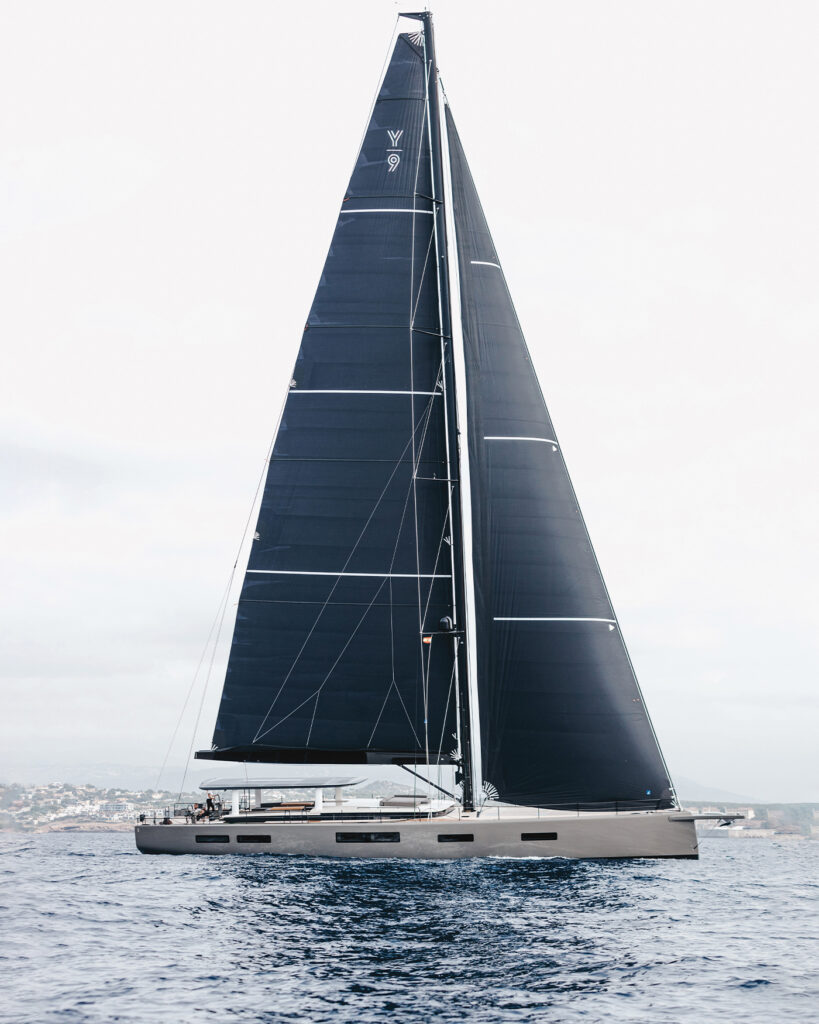
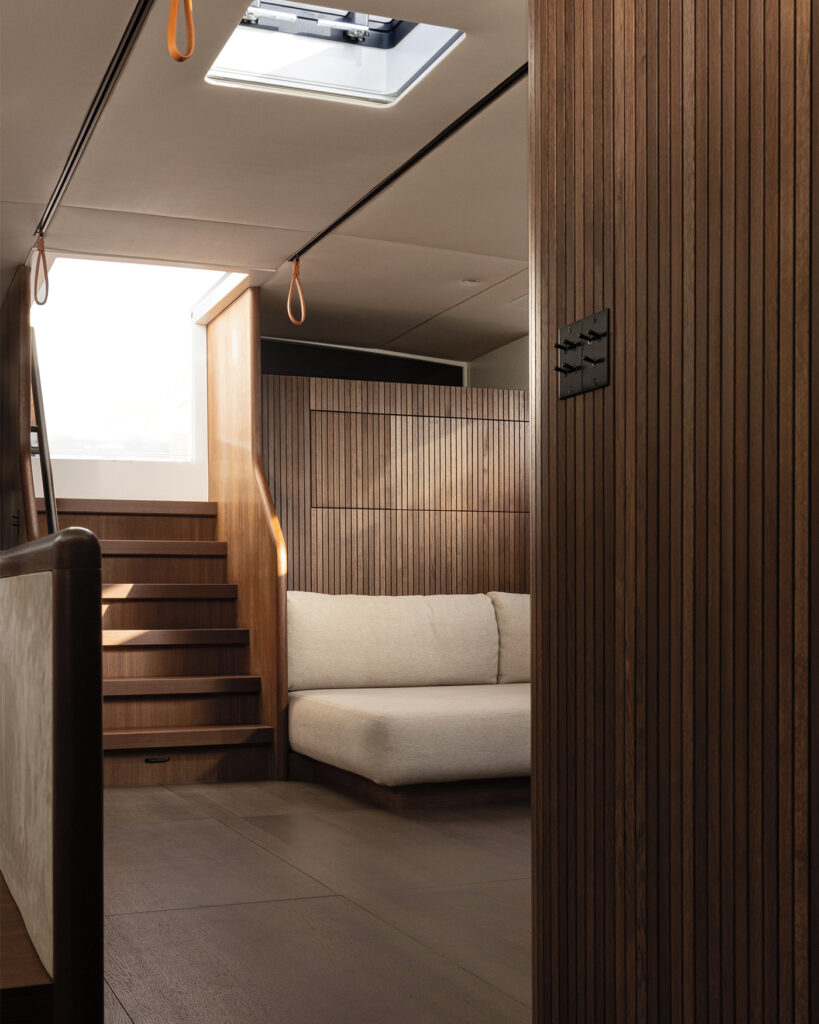
Similar to many of the studio’s other spaces, the hull of the boat emphasizes tactile surfaces, natural materials, and matte finishes in warm, neutral colours: beige, sand, earth. On the port side of the ship is a lounge area featuring a large, comfortable sofa and low coffee table in a cozy, homely setup that wouldn’t look out of place in a residential abode. This area is separated from the dining room by a short wooden flight of stairs that lead to the deck, the steps protruding out a bit so that lights on the bottoms can flood the space with warm, orange light during the evening.
Across the stairs is a long wooden table affixed to the ground on thin columns, with spaces for eight guests: minimal wiry chairs curve around one side, with a cream-upholstered bench on the other that matches the sofa in the lounge and ties the spaces together. In both the dining room and the lounge there’s a subtle contrast between the rich, dark wood of the wall panels and the creamy white walls around the ship’s windows, from which abundant light is cast across the space.
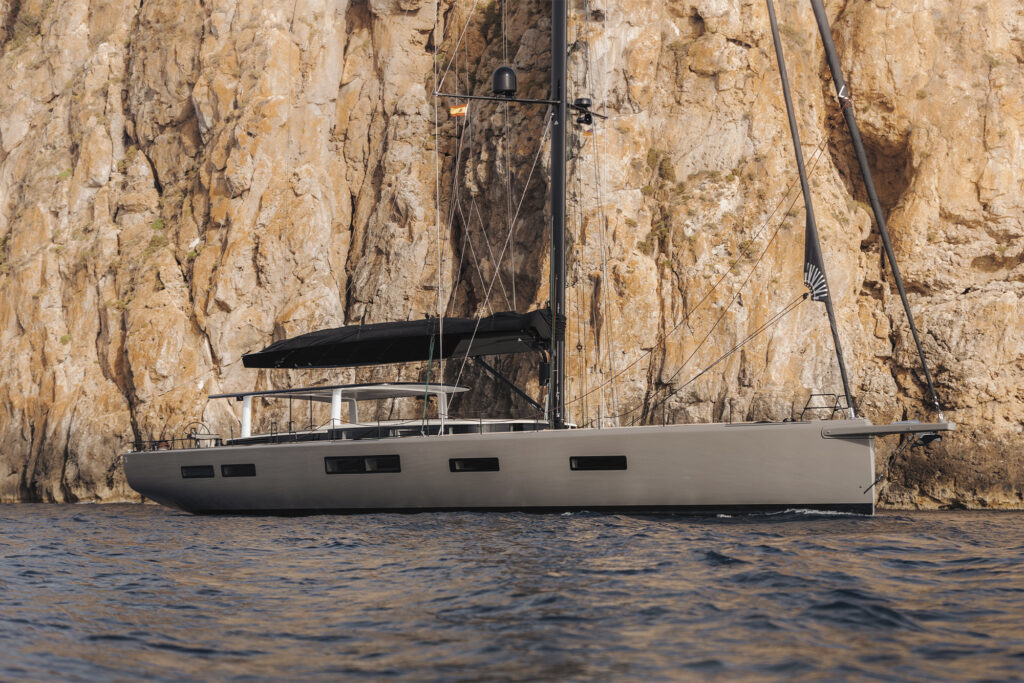
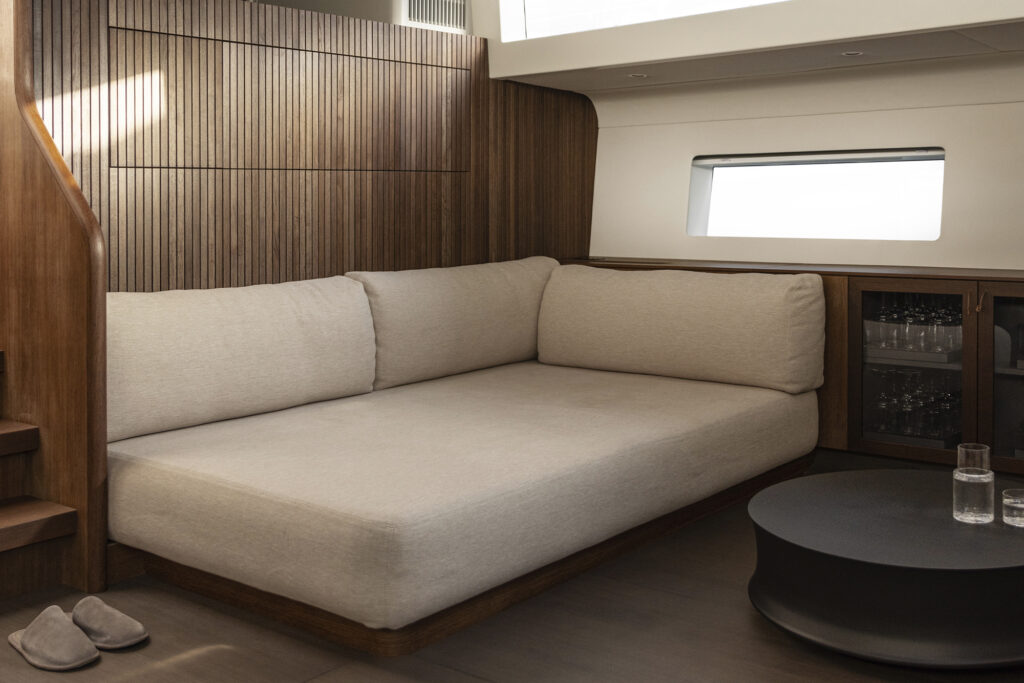
The panels shift their appearance slightly based on the quality of sunlight that hits them, emphasizing the space’s vitality during the day and its intimacy during the night. Stained oak was used in these walls and elsewhere throughout the ship: “We wanted to create an environment that nods towards the shipbuilding of the past, but without using rare tree species,” says Eland.
At the end of the dining room is a divider that rises up halfway to the ceiling, separating the space from the workstation, a wide desk featuring built-in recessions for keeping your utensils and objects safe from rolling away when the ship sways. The half-size of the divider, which matches the dark wood panels of the walls, finds a compromise between dividing the spaces and leaving the flow of the hull open, and thus more spacious.
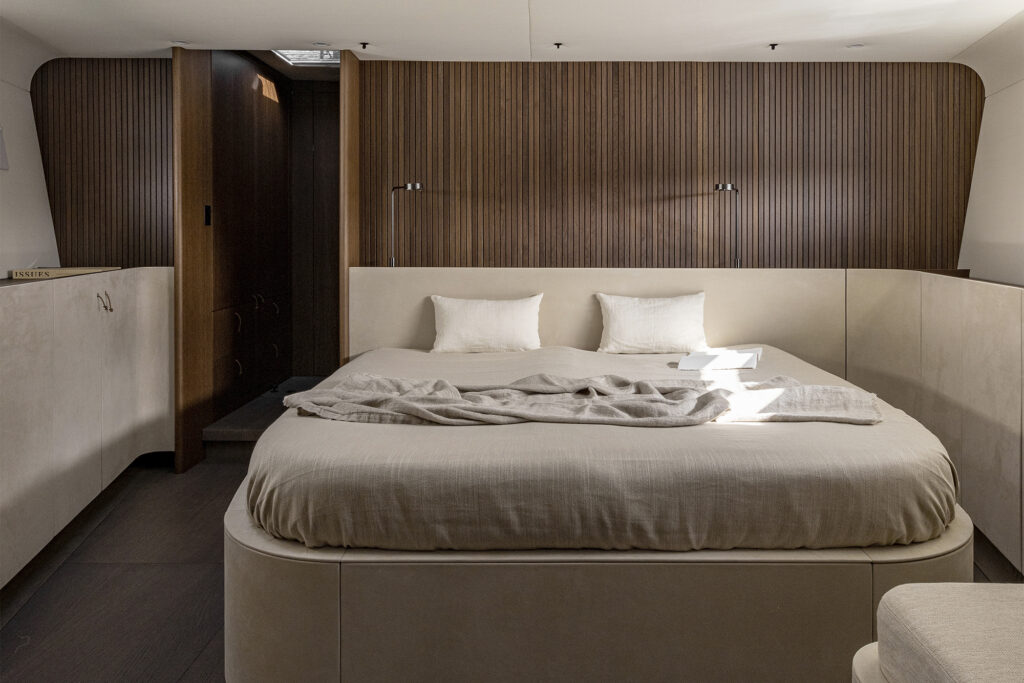
There is one area sequestered away from the rest of the hull for privacy: the master bedroom, present in the bow of the ship through a dark wooden doorway. Inside, the bed and cabinets are upholstered in a light suede to contrast against the dark woods of the walls and floors. Through another sliding wood-panelled door that’s camouflaged into the wall is the bathroom, with elegant slate-grey sinks and black hardware.
Norm Architects’ ethos is to “create spaces for the senses that are human-centric,” and the Y9 is no exception. The uncluttered, simplistic-yet-luxurious design is lush with beautiful tactile materials and permeated by a visceral feeling of warmth and naturalness.
“The yacht is created for people,” says Eland. “And we wanted to give them a unique — and spacious — experience. To evoke the same feeling as in a residential or hospitality setting.”
